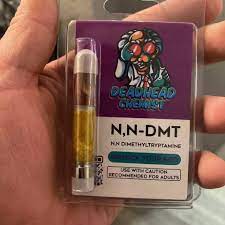What is NN-DMT? An In-Depth Exploration
NN-Dimethyltryptamine (NN-DMT or simply DMT) is a powerful psychedelic compound known for its profound effects on human consciousness. This article will explore the chemistry, history, cultural significance, pharmacology, effects, potential therapeutic uses, risks, and the legal status of NN-DMT.
1. Chemistry and Structure of DMT
NN-Dimethyltryptamine is a naturally occurring tryptamine alkaloid. Its chemical structure consists of a tryptamine backbone with two methyl groups attached to the nitrogen atom. The molecular formula for DMT is C12H16N2.
1.1 Synthesis
DMT can be synthesized in a laboratory, but it is also found in numerous plants and animals. Its natural occurrence in various species has intrigued scientists and researchers for decades.
2. History and Cultural Significance
2.1 Indigenous Use
DMT has been used for centuries by indigenous peoples in South America. It is a key ingredient in traditional shamanic brews like Ayahuasca, which is made by combining plants containing DMT with others that inhibit its breakdown in the body.
2.2 Western Discovery
DMT was first synthesized by Canadian chemist Richard Manske in 1931, but its psychoactive properties were not discovered until much later. Hungarian chemist and psychiatrist Stephen Szára was among the first to conduct experiments with DMT in the 1950s.
3. Pharmacology
DMT acts primarily as an agonist at the serotonin 5-HT2A receptor. This receptor is thought to be responsible for the psychedelic effects of compounds like DMT, LSD, and psilocybin.
3.1 Mechanism of Action
The exact mechanism by which DMT induces its effects is not fully understood, but it is known to interact with several neurotransmitter systems, most notably the serotonergic system.
3.2 Metabolism
DMT is rapidly metabolized by the enzyme monoamine oxidase (MAO) in the body, which is why it is often combined with MAO inhibitors (MAOIs) in traditional brews like Ayahuasca to prolong its effects.
4. Effects of DMT
4.1 Psychological Effects
DMT is known for producing intense visual and auditory hallucinations, as well as profound changes in the perception of time and space. Users often report experiencing otherworldly landscapes, meeting sentient beings, and undergoing life-altering spiritual experiences.
4.2 Physiological Effects
Physiologically, DMT can cause increases in heart rate and blood pressure, pupil dilation, and other autonomic responses. These effects are generally short-lived, as DMT’s action in the body is relatively brief.
5. Potential Therapeutic Uses
Recent research has explored the potential therapeutic uses of DMT and other psychedelics for treating various mental health conditions, such as depression, anxiety, and PTSD.
5.1 Depression and Anxiety
Studies have suggested that DMT and related compounds can produce rapid and sustained reductions in depressive and anxious symptoms, potentially offering new avenues for treatment-resistant cases.
5.2 PTSD
Preliminary research indicates that DMT might help alleviate symptoms of PTSD by allowing patients to process traumatic memories in a supportive and controlled setting.
6. Risks and Safety
While DMT is generally considered to have a low potential for abuse, it is not without risks. Adverse effects can include psychological distress, confusion, and in rare cases, persisting perceptual changes.
6.1 Psychological Risks
The intense nature of the DMT experience can be overwhelming and may lead to acute anxiety or panic. It is important for users to approach DMT with caution and ideally in a safe, controlled environment.
6.2 Physical Risks
Physical risks are generally minimal, but individuals with pre-existing heart conditions should exercise caution due to the potential for elevated heart rate and blood pressure.
7. Legal Status
The legal status of DMT varies widely around the world. In many countries, it is classified as a Schedule I substance, making it illegal to possess, distribute, or use.
7.1 United States
In the United States, DMT is classified as a Schedule I controlled substance under the Controlled Substances Act, indicating it has a high potential for abuse and no accepted medical use.
7.2 Internationally
Internationally, the legal status of DMT varies. In some countries, it is strictly prohibited, while in others, its use in traditional practices is legally protected.
8. Conclusion
NN-Dimethyltryptamine is a powerful and enigmatic compound with a rich history and significant cultural, therapeutic, and scientific interest. While it offers profound insights and potential therapeutic benefits, it also carries risks that must be carefully managed. As research continues, our understanding of DMT and its place in medicine and society will undoubtedly evolve.
References
- Strassman, R. (2001). DMT: The Spirit Molecule. Park Street Press. Link
- McKenna, T. (1993). Food of the Gods. Bantam. Link
- Barker, S. A. (2018). N, N-Dimethyltryptamine (DMT), an endogenous hallucinogen: Past, present, and future research to determine its role and function. Frontiers in Neuroscience, 12, 536. Link
- Tupper, K. W. (2008). The globalization of Ayahuasca: Harm reduction or benefit maximization? International Journal of Drug Policy, 19(4), 297-303. Link
- Nichols, D. E. (2016). Psychedelics. Pharmacological Reviews, 68(2), 264-355. Link
- Szára, S. (1956). Dimethyltryptamine: Its metabolism in man; the relation of its psychotic effect to the serotonin metabolism. Experientia, 12(11), 441-442. Link
This article provides a comprehensive overview of NN-DMT, highlighting its complex nature and the various dimensions of its use and significance. For those seeking further information, the references included offer a starting point for deeper exploration.

